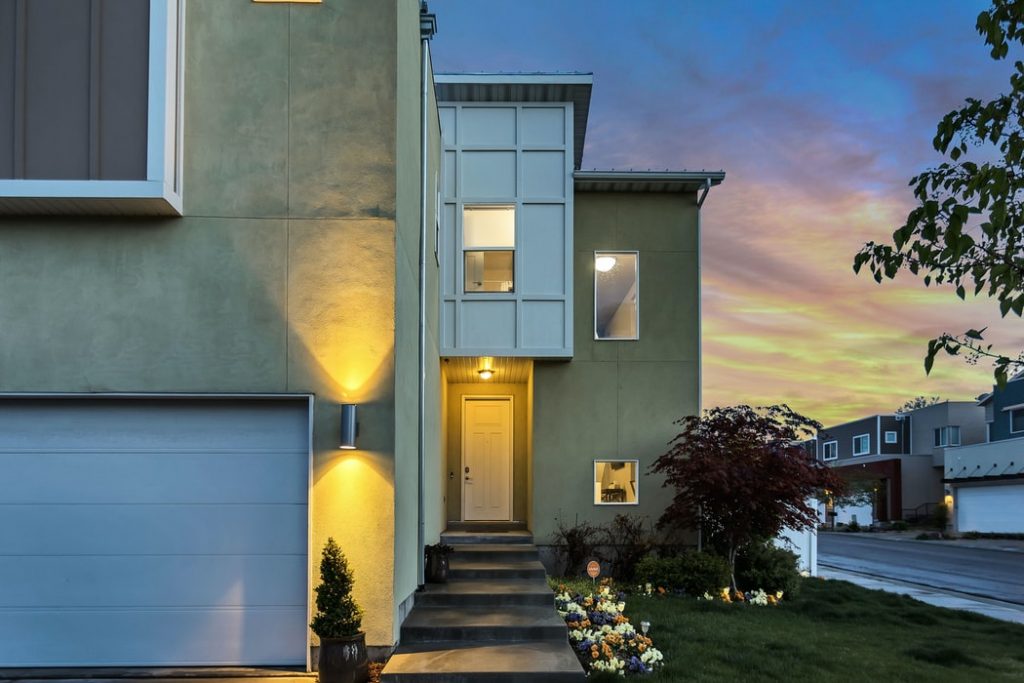The CoreLogic House Price Index (HPI) for February 2021 suggests a housing slowdown could be on its way, with Tauranga the first of the main centres to see a month-on-month drop in house prices

The recent upward momentum in the NZ residential property market continued through February, although the Tauranga decline could be a signal of things to come.
The HPI for February 2021 shows nationwide property values continued to grow over the month, increasing by 2.6%. This takes growth in the last 12 months to 14.5% – a rate not bettered since the 12 months to October 2016 (14.8%).
With the loan-to-value ratio (LVR) restrictions officially back in place this week (1 March) and further tightening for investors from 1 May, it’s likely that the current rate of growth will ease over the coming months.
“This is especially likely following the Minister of Finance’s direction to the Reserve Bank to ‘have regard to the impact of its actions on the Government’s policy of supporting more sustainable house prices’,” CoreLogic’s Head of Research Nick Goodall explains.
”While previously the RBNZ Governor, Adrian Orr, has expressed that the Bank has always done so, the latest communication is more explicit with regard to actively contributing to the Government’s housing policy objectives, namely reducing investor activity and improving affordability for first home buyers.”
The RBNZ already has the LVR restrictions in its macro-prudential ‘toolkit’, so these could be further modified to help achieve the Government’s objectives, and the introduction of debt-to-income limits for investors could also be added to their toolkit later in the year.
“With the hard line taken by the Government to reduce speculator activity, and now the Reserve Bank having somewhat of a mandate to assist them, the outlook for future property investment looks less certain, although with the Prime Minister also declaring a desire to protect the wealth in our largest asset class, expectations are for a slowing of growth rather than a reversal,” says Goodall.
The CoreLogic HPI details the broad-based strength of the property market, and alongside the recently released Housing Affordability Report illustrates why the Government has felt the need to be so involved. Affordability is being stretched as properties accelerate in value.
“Each of our six main centres have experienced annual growth of more than 10% to the end of February, with Wellington seeing the greatest rate of growth at 16.6%. This takes the average property value for the wider Wellington area (including Porirua City, Hutt City and Upper Hutt City) to over $900,000 for the first time.
“Indeed the average property value in Wellington City now exceeds $1m after 7.2% growth since November. As is the case in most other parts of the country, limited stock of listings, a lack of land for development and restrictive infrastructure spend by Councils is prohibiting supply, at a time when demand is strong,” says Goodall.
The outer-areas of the Wellington region saw the greatest growth, which reflects a mix of better affordability, improved commute times and remote and flexible working arrangements become more common.
Carterton property values increased by 13.7% over the summer period (Dec-Feb), while the average value in the Kapiti Coast District now exceeds $800,000 for the first time, after growing by 12.4% over the same period. The annual growth rate of 23.0% in Kapiti is now the equal highest for the district (matching December 2016).
There was a dip in values of 1.5% in Tauranga over the month of February, but in the broader context of 6.7% growth over the last three months it’s too soon to call this a trend.
Tauranga does stick out when it comes to unaffordability however, with 43% of the average income required to service a mortgage – the worst of the main centres. So there are factors in play here which could lead to a prolonged slowdown in property value growth.
Goodall added “From a nationwide perspective banks have been busy assessing mortgage applications and ordering valuations for properties to lend on, but there are anecdotes of rushed applications to ‘beat the return of LVR restrictions’ from banks outside the ‘big 4’.
“Interestingly mortgage advisors have stressed the importance of clear communication of the LVR limits as potential would-be buyers are put off due to the perception of requiring a 20% deposit. This is because there is an allowance of up to 20% of new lending to be written with less than the standard 20% deposit, as well as there being exemptions to the limits for new builds.”
Agents have also hit the ground running so far this year, with property appraisals generated through CoreLogic’s Property Guru platform continuing to lift at the end of February, however ‘for sale’ stock remains low after a strong sales period at the end of 2020. Consistent growth in listings, alongside a slowdown in sales will be required before there’s any genuine possibility of value falls.
The other factor to watch is the prospect of higher interest rates. In the Reserve Bank’s Monetary Policy Statement released last week, the Bank hinted that higher interest rates are coming, possibly as early as September 2022. Any move upwards is likely to be small and gradual and mortgage holders should be relatively insulated due to the current interest rate serviceability tests run by the banks (around 6%), however given the prior outlook was for the potential of the official cash rate (OCR) to go negative the shift in outlook cannot be ignored.
Of course no forward looking view is complete without consideration of further snap and/or prolonged lockdowns due to COVID-19 cases in the community.
Goodall says “Needless to say the impact on businesses, the broader economy, people’s confidence and then specifically their ability to transact property will be felt each time. And until the vaccine has been rolled out to a significant majority of the population this uncertainty and nervousness will likely remain.”
Main Centres
| Change in property values | Average Value | |||
| Month | Quarter | Annual | ||
| Auckland | 2.9% | 7.4% | 13.3% | $1,198,564 |
| Hamilton | 2.7% | 8.1% | 14.5% | $712,717 |
| Tauranga | -1.5% | 6.7% | 14.0% | $875,675 |
| Wellington | 2.8% | 8.3% | 16.6% | $903,864 |
| Christchurch | 1.5% | 6.3% | 10.2% | $564,859 |
| Dunedin | 3.2% | 7.0% | 15.3% | $611,336 |
Auckland’s recent momentum continued to build in February, with average values up by 2.9% – exceeding the national figure of 2.6%, and second-only to Dunedin in terms of monthly change amongst the main centres. Auckland’s average value is now within a whisker of the $1.2m mark, for the first time, and 13.3% above a year ago. The growth in values in our largest city is coming on the back of low listings (the new weekly flow is running a bit below last year’s levels) and a sustained presence of investors – their share of purchases hit 32% in January.
The average property value in Hamilton went above $700,000 for the first time in February, hitting $712,717 – up by 2.7% from January’s mark and also 14.5% higher than a year earlier. Growth is reasonably broad-based across the city, although the south west (and generally cheaper) parts of Hamilton are slightly ahead of the rest, with an annual rise of 16.3% in February.
Further south in Christchurch, average values rose by another 1.5% in February, pushing them up to almost $565,000, 10.2% higher than a year ago. The annual growth rate in Christchurch hasn’t been in double digits since February 2014, a time when this market had just passed its peak growth rate in the aftermath of the post-earthquake upswing, which was due not least to a reduction in the city’s housing stock. However, even despite the recent growth in property values, Christchurch’s housing affordability is still much more favourable than the other main centres.
After a sluggish period through the middle of last year, Dunedin has started to surge again lately, with average values up by 3.2% in February alone, and by 15.3% over the past year (which equates to more than $81,000). Of course, the flipside is reduced affordability; it now takes about nine years to save the average deposit in Dunedin, worse than in Christchurch, Hamilton, and Wellington. By contrast, from 2014 to 2016, Dunedin required the fewest years to save of each of these cities.
Provincial Centres (ordered by annual growth rate)
| Change in property values | Average Value | |||
| TA | Month | Quarter | Annual | |
| Queenstown | 2.4% | 4.4% | 2.5% | $1,243,461 |
| Nelson | 1.7% | 5.8% | 10.4% | $721,562 |
| Whangarei | 2.6% | 6.8% | 16.0% | $652,027 |
| New Plymouth | 2.5% | 7.5% | 16.0% | $584,498 |
| Rotorua | 0.6% | 5.8% | 16.8% | $604,543 |
| Invercargill | 2.2% | 8.4% | 16.9% | $401,139 |
| Napier | 3.3% | 11.1% | 20.3% | $707,172 |
| Hastings | 4.4% | 10.3% | 22.0% | $692,568 |
| Palmerston North | 2.4% | 9.2% | 22.7% | $614,606 |
| Kapiti Coast | 2.7% | 12.4% | 23.0% | $801,137 |
| Whanganui | 5.9% | 15.0% | 28.8% | $451,446 |
| Gisborne | 3.4% | 9.5% | 30.6% | $544,343 |
Around the main provincial centres, the recent momentum rolled on in February, and four out of 12 have seen double-digit growth in average property values in the past three months alone. Whanganui is leading the field (15.0%), and Gisborne (9.5%) and Palmerston North (9.2%) are not far off the 10% mark for quarterly growth either.
The area that stands out over a longer, 12-month horizon is Gisborne, with an increase of 30.6% since February last year – or more than $127,000. Based on a 20% deposit, this means buyers have had to raise at least an extra $25,400 in the past year alone. In other words, the flipside of rapidly rising house prices is a sharp decline in affordability, which is likely to progressively weigh on property growth rates. Gisborne’s house price to income ratio (4.8) and the number of years to save a deposit (6.4) are at their highest levels since at least 2004, and despite low interest rates, the share of income required to service a typical mortgage is currently 23.0%, the highest for more than a decade.
Note:
The CoreLogic HPI uses a rolling three month collection of sales data. This has always been the case and ensures a large sample of sales data is used to measure value change over time. This does mean the measure can be less reactive to recent market movements but offers a smooth trend over time. However, due to having agent and non-agent sales included, the index provides the most comprehensive measure of property value change over the longer term.



